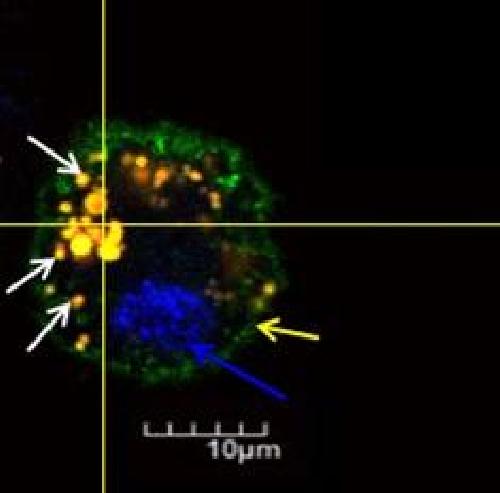A collaborative Brigham and Women's Hospital (BWH) and Johns Hopkins University (JHU) co-led team has found proof-of-concept evidence for a potential cancer treatment that leverages microparticles and mesenchymal stem cells. The researchers devised an approach to stably internalize chemotherapy loaded microparticles into cells. With the help of a powerful prodrug - developed by collaborators at JHU - that is specifically activated by prostate cells, the researchers effectively targeted and killed prostate cancer tumor cells in proof of concept experiments. The researchers' results were recently published in Biomaterials.
"In cancer therapeutics, one of the great challenges is finding how to specifically deliver high doses of chemotherapeutics to a tumor, but minimize the systemic toxicity," said Jeffrey Karp, PhD, the BWH senior author.
Prostate cancer affects over 2.5 million Americans, but there is an unmet need for targeted treatment with minimal systemic toxicity, especially for metastatic disease. Prostate cancer tumors are characterized by a mixed cell population, which makes targeting the different kinds of cells with one treatment very difficult.
 Confocal microscopy image of stem cells loaded with drug containing polymeric microparticles. Credit: Jeff Karp and Oren Levy, Brigham and Women's Hospital
Confocal microscopy image of stem cells loaded with drug containing polymeric microparticles. Credit: Jeff Karp and Oren Levy, Brigham and Women's Hospital
"Mesenchymal stem cells represent a potential vehicle that can be engineered to seek out tumors," said Oren Levy, PhD, co-lead author. "Loading those cells with a potent chemotherapeutic drug is a promising cell-based Trojan horse approach to deliver drugs to sites of cancer."
This cell-based drug delivery platform, supported in part by the Prostate Cancer Foundation and Movember Foundation, successfully kills tumor cells via a strong "bystander effect."
"The prodrug only becomes toxic in the presence of the tumor microenvironment, which adds another layer of specificity to this targeted delivery system," said John Isaacs, PhD, the JHU senior author.
In the future, researchers hope to harness this versatile particle-in-a-cell platform technology for use with different drugs to target an array of diseases, including cancer and neurodegenerative diseases.
source: Brigham and Women's Hospital